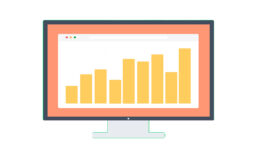
SEO ranking factors in 2019

- Content: length, quality, and relevance

The highest ranking content is unique, in-depth, and covers a broad range of information relating to your subject and its relevant search terms. As always, repetition or duplicate content, rambling and keyword stuffing are immediately obvious so avoid at all costs. Quality always beats quantity, and in fact when it comes to your site, shorter is definitely sweeter. If you can sum up a paragraph in a sentence, do it.
When it comes to blogs, many writers and businesses seem to be under the impression that more words look more impressive. Long form posts can perform extremely well, but only if they are well researched, supported by images and infographics, and are broken down into easy-to-scan sections. Waffling on for the sake of it in huge slabs of text is never going to get you good rankings.
Break up text with images to prevent the reader from becoming fatigued—if we need to write a book report, we would rather just watch the movie to get the information needed quickly. The same applies for your website, just make sure that your images are tagged and indexed correctly, and video scripts are transcribed.
- Backlinks

Backlinks are still a trusted way for Google to tell if your site is backed by the recommendation of other high ranking sites. By having them link to you page and vice versa, it like having a CEO put you forward for a new position—it looks really good that you’ve got friends in high places.
- Mobile design

We all get frustrated when we come across a site that’s not mobile optimised, and in late 2016 Google finally agreed that this would be a major ranking factor. But it’s not just the layout that frustrates us. Often, the desktop version of a site will have been indexed, but when we are directed to a site on a mobile, we can’t find the information we’re after because mobile sites contain much more concise content. Geolocation, local relevance and interacting with the other functionalities of your phone are all now major considerations. On-the-go searching also means that expectations are higher for instant answers.
- Page speed

Slow page speeds, and less than perfect UX are going to get pinged, because they compromise on the goals of delivering relevant and quick information to searchers.
- Domain power

Your site domain can contribute to your ranking. Older domains tend to do better with less effort, because they’re assumed to belong to experienced businesses, whereas the newcomers can have a hard time breaking in. Exact match domains might not be as guaranteed as they used to be, but they still boost rankings significantly.
- URL structure
Individual page URLs should be as short and human reader-friendly as possible. People are more likely to click on a link made of a blog title rather than numbers and symbols. The steps should be obvious, and kept to under four. The more clicks from the homepage, the less authority the page will have.
- Site security

Google has confirmed that site security will be factored into their algorithm. That is, HTTPS sites will be favoured over HTTP, so it’s time to switch those domains over.
- Brand power

Branded searches have considerable ranking sway, in that the more traffic these searches get, the more it will be recognised by the algorithm. When this branded focus is combined with broader SEO and social media techniques like driving searches from Facebook and Pinterest, this is when the quality ratings and rankings will be most attainable.
- Low bounce rate

Most people accept that a high bounce rate is a strong indication that the content quality is poor, or that there is some other reason that the site should be rated poorly. People may click off if the site is not user-friendly, if they can’t find the information they seek, or the content is spammy.
Also Read:



